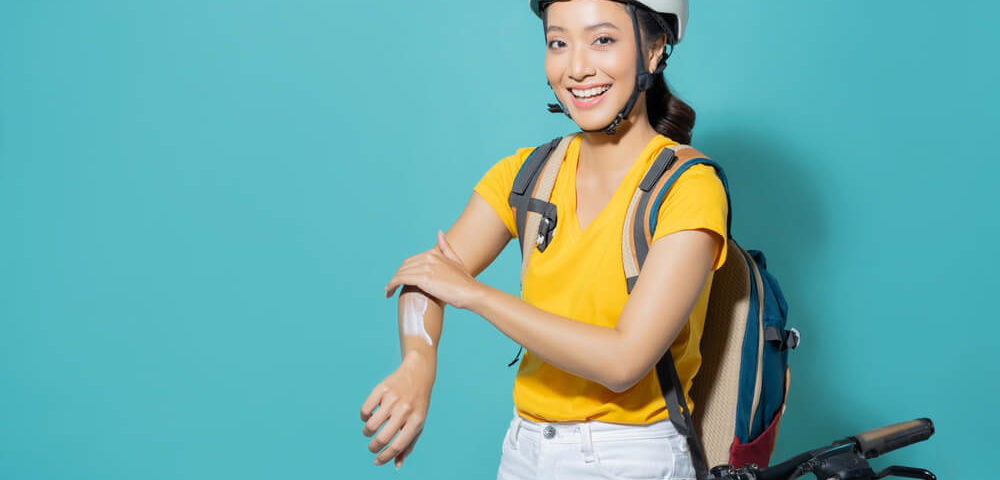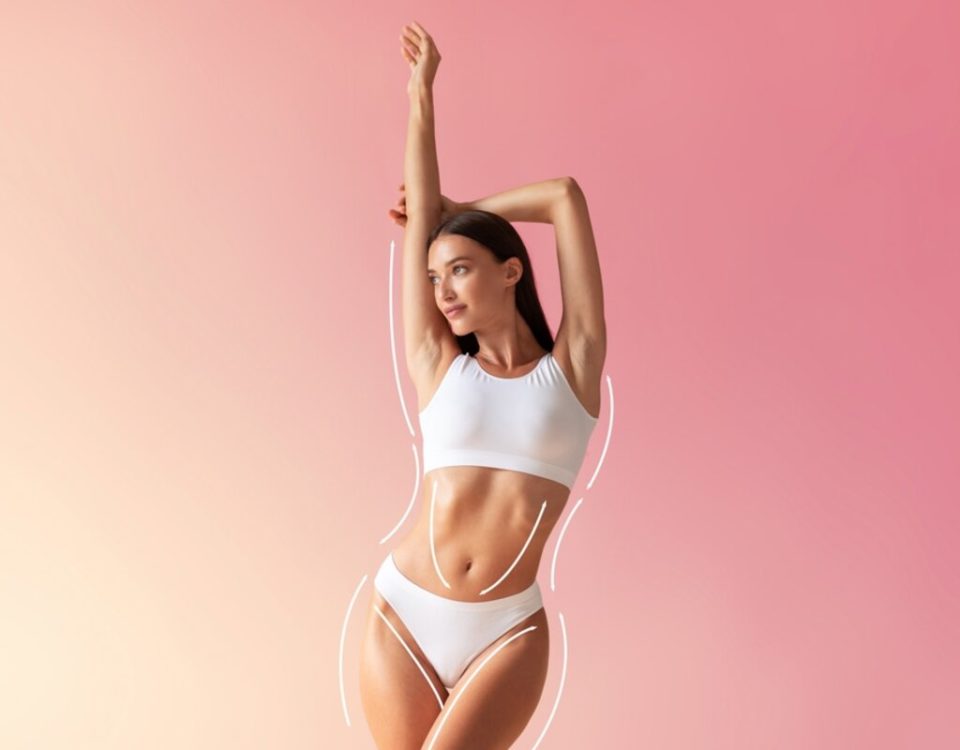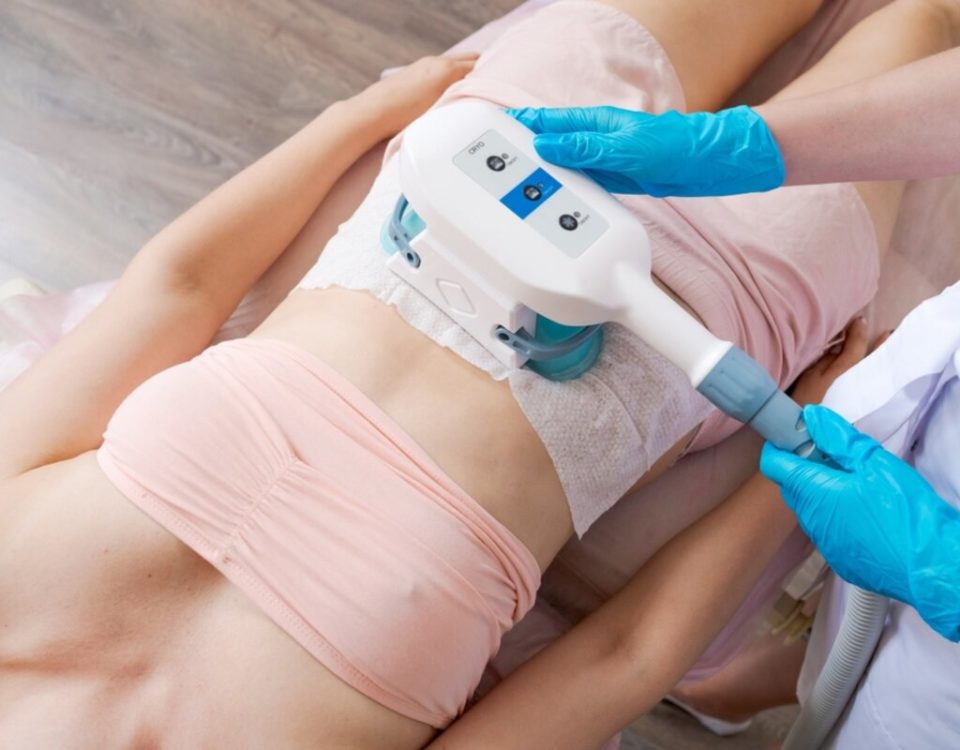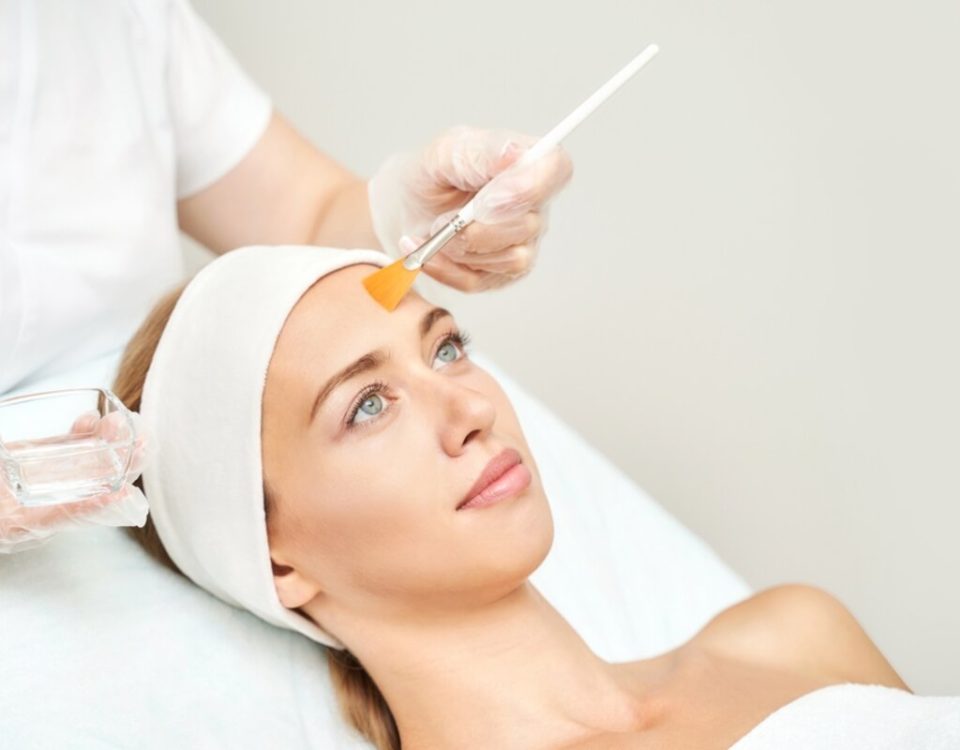
How Does Microdermabrasion Treat Acne Scars?
February 17, 2023
Botox for Crow’s Feet: What You Should Know
February 23, 2023Spring and summer is the best time for outdoor activities such as family picnics, barbecues, beach visits, going to amusement parks, blueberry picking, canoeing, and so many more fun engagements to do in nature. However, you need to keep your skin protected with sunscreen, especially as you stay out in the sun more often.
Sunscreen works as a layer of protection on your skin. One or more of the active ingredients in the product work to block out the ultraviolet (UV) rays that your skin would otherwise absorb if sunscreen were not on your skin.
Wearing sunscreen reduces your risk of sunburn, skin aging, and skin cancers. If you find your skin aging faster than you would like, dermal fillers can help.
What Are the Active Ingredients in Sunscreen?
Sunscreen contains one or more of these active ingredients in its formula to provide UV ray protection.
Avobenzone
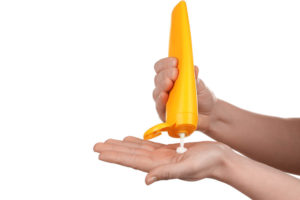 Avobenzone started being included in chemical sunscreen formulas back in the 1990s. This active ingredient reduces the UV rays, including ultraviolet A (UVA) and ultraviolet B (UVB) rays, that your skin absorbs from the sun which can cause skin aging or skin-related concerns. Opt for facial treatments to uplift your skin for a more revitalized, younger look.
Avobenzone started being included in chemical sunscreen formulas back in the 1990s. This active ingredient reduces the UV rays, including ultraviolet A (UVA) and ultraviolet B (UVB) rays, that your skin absorbs from the sun which can cause skin aging or skin-related concerns. Opt for facial treatments to uplift your skin for a more revitalized, younger look.
However, avobenzone-based sunscreen breaks down faster than a formula containing zinc oxide. Proceed with caution when using a chemical sunscreen featuring avobenzone because it can only last for about a half hour before you have to reapply more on your skin for further protection.
Cinoxate
Cinoxate is another type of active ingredient in chemical sunscreen that helps to reduce the UV rays your skin absorbs which leads to faster skin aging or higher risks of skin cancer. You only need about an ounce of cinoxate-based sunscreen applied throughout the exposed parts of your body to get the full effect of sun protection. Chemical peel treatments can reduce age spots on your skin that pop up from too much sun exposure.
Ecamsule
Ecamsule is a type of active ingredient that takes the form of terephthalylidene dicamphor sulfonic acid in sunscreen. It is a compound that has been approved by the U.S. Food and Drug Administration (FDA), but it only has a specific amount in L’Oreal sunscreen brands.
Octinoxate
Octinoxate is a chemical compound featured in chemical sunscreens or lip balm products, otherwise scientifically known as octyl methoxycinnamate. It absorbs the UVB rays that come in contact with your skin so that it does not get damaged while in the sun. However, octinoxate has caused contact dermatitis and other skin reactions for some users, so proceed with caution when using octinoxate-based sunscreen products.
Octisalate
Octisalate is another chemical compound that is an active ingredient in chemical-based sunscreens and is scientifically known as octyl salicylate. Not only does it help absorb UVB rays to protect the skin, but it also gives sunscreen its water-resistant function.
Oxybenzone
Oxybenzone is one of the active ingredients in chemical sunscreen that blocks you from absorbing too many UVB rays and UVA rays that can cause skin cancer. Hence, you will not get sunburn as long as you have a good coating of sunscreen that includes oxybenzone.
Titanium Dioxide
Titanium dioxide is a naturally-occurring metal that some animals and plants have in their bodies, which is also an active ingredient found in mineral sunscreen. Like the other active ingredients listed here, it blocks out UV rays to reduce the likelihood of contracting skin cancer or getting wrinkled skin from too much sun exposure.
Zinc Oxide
Zinc oxide (ZnO) is an insoluble chemical compound that looks like a white powder. As an active ingredient in mineral sunscreen, it gives the product that trademarks white color and helps to lessen the UV rays the skin absorbs while in the sun. This is the same ingredient used in most diaper rash creams for little ones.
How Does Sunscreen Give Your Skin Protection From the Sun?
Sunscreen works as a chemical absorber (with ingredients such as oxybenzone or avobenzone) or a physical blocker (because of zinc oxide or titanium dioxide).
Chemical-based sunscreen absorbs the UV rays through its formula before the skin has a chance to do so. The chemicals from the sunscreen absorbing the UV rays turn into a heat response for your body. Physical-blocking sunscreen prevents the UV rays from landing on your skin at all, acting as a protective shield for your skin.
What Types of Sunscreen Are Available on the Market?
Here are the most popular types of sunscreen on the market that you can purchase.
Broad-Spectrum SPF Sunscreen
Broad-spectrum sun protection factor (SPF) sunscreen is one of the best types to purchase because it helps to protect your body from UVA and UVB rays. A higher SPF means that you will have additional protection from the sun for a longer timeframe.
Chemical Sunscreen
Chemical sunscreen contains different organic compounds such as avobenzone or oxybenzone that absorb UV rays into your skin and turn that into heat for your body. However, chemical sunscreen is known to break down faster than mineral sunscreen and it causes more skin reactions depending on your skin type.
Mineral Sunscreen
Mineral sunscreen with zinc oxide, titanium dioxide, or both is best for children to use. It is recommended that smaller children and little ones with eczema should not use chemical sunscreen with oxybenzone as one of the active ingredients.
Instead, parents should put mineral sunscreen on their children that utilize zinc oxide, titanium dioxide, or both as active ingredients to block out harmful UV rays from their skin.
Frequently Asked Questions
Now that you know about the active ingredients in sunscreen, the types, and how it works, here are answers to your frequently asked questions related to more details about the topic.
What Is SPF?
SPF is a unit of measurement that shows how much UV radiation is needed to initiate sunburn on a person’s skin.
When it comes to sunscreen, a higher SPF number means that you will have increased protection from the sun. Hence, an SPF 50 sunscreen will give you more protection in the sun than an SPF 30 sunscreen. However, both are beneficial for use when out in the sun as long as you reapply sunscreen regularly.
How Do You Apply Sunscreen Correctly?
Choose an age-appropriate broad-spectrum sunscreen that is SPF 30 or higher. Squeeze a little amount on your hands and work on to where your skin will be exposed such as the entire face, ears, neck, back (if exposed), arms, legs, and the tops of your feet.
How Often Should You Reapply Sunscreen?
Apply sunscreen at least a half hour before you plan to be in the sun. Plan to reapply sunscreen to your skin as two hours pass by. If you go swimming, reapply sunscreen after you dry off. If you are sweating while walking outside in the hot sun, try reapplying sunscreen at least once an hour.
What Are UVB Rays?
UVB rays are a type of ultraviolet radiation from the sun that is known to cause increased skin cancer cases in people versus its cousin, UVA rays. Because UVB rays have more radiation energy in them than the UVA alternative, this is why UVB initiates more skin cancer cases.
What Are UVA Rays?
UVA rays are ultraviolet radiation that causes your skin to age and wrinkle more quickly. Some UVA rays play a part in causing skin cancer like their UVB cousin.
Take Control of Your Skin Care
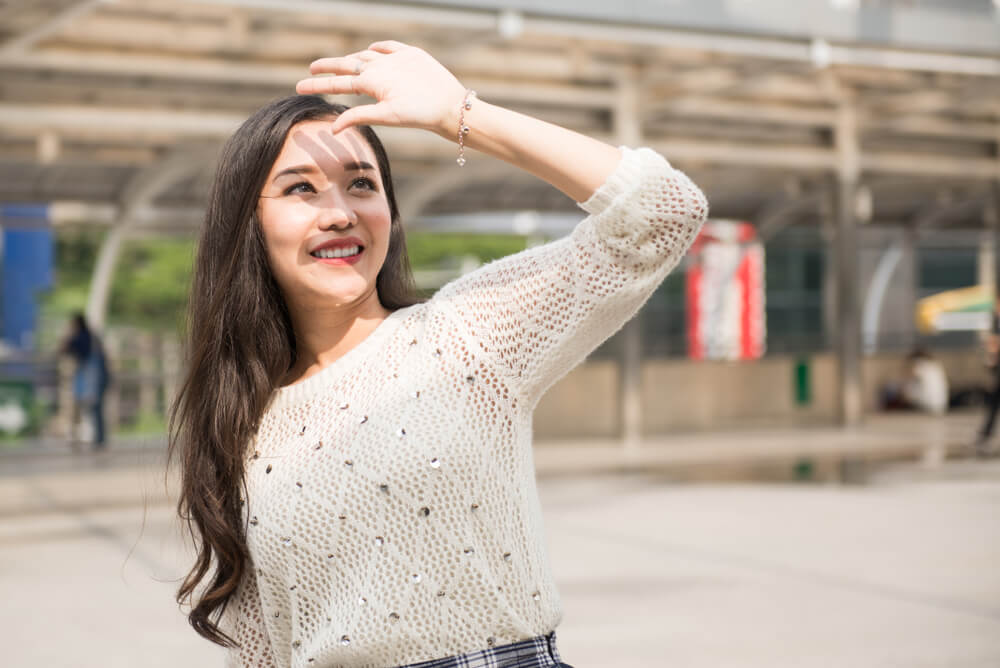
Don’t forget sunscreen during spring and summer as a way to keep your skin looking healthier and younger. Contact Spa MD today for photo facials, dermaplaning, laser hair removal, and other beauty enhancement treatments that can help to reduce skin aging.
New Clients:
$35 deposit for all new clients
Cancellation/No Show Policy:
$35 fee for all no show, no call and any cancellations less than 24hrs before the start of your appointment.Any prepaid services will be forfeited.
Call us at +1(651)222-4490
Email us at SpaConsultantsMD@gmail.com
or, Schedule a free consultation
We are located on the main level inside of the Blair Arcade Building. We validate parking in the lot connected to the building off of Selby. Be sure to bring your ticket in with you!

